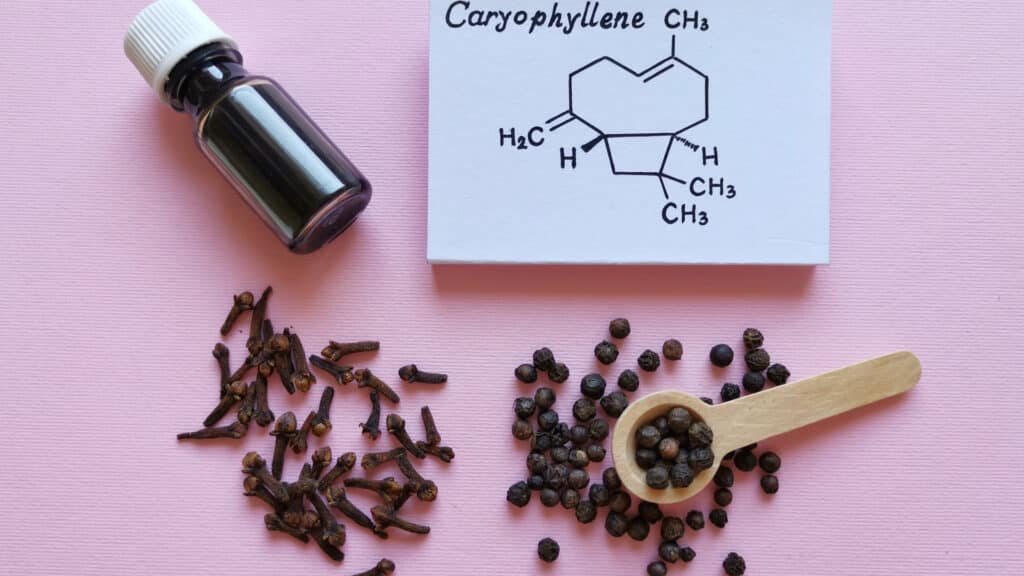Terpene Talk: Caryophyllene

The last two new strains of cannabis I reviewed – Citral Glue and Lumpy Space Princess – had something in common. Well, aside from the fact that both, as my grandmother used to say, went down like molasses, they each had terpene profiles that included caryophyllene (or beta-caryophyllene), with it even being the dominant terpene in Citral Glue. So caryophyllene seemed like a solid entry to tackle for Terpene Talk.
Often described as smelling peppery or musky, caryophyllene can also be found in herbs like oregano, basil, rosemary and perhaps unsurprisingly, black pepper. It’s always worth talking about the places specific terpenes can be found outside of cannabis strains, as it demonstrates the complete and utter normalcy of the components that make up our pot. I mean, if there’s one thing we aim to do here at Cannabinthusiast, it’s normalize cannabis. The Devil’s Weed it most certainly is not.
So what can beta-caryophyllene do for you? Any time I talk about this sort of thing, I feel the need to couch it in terms of “well, we need much more science, but…” According to this graph from Weedmaps, stress relief is one result, and I think anyone who uses cannabis will agree that stress relief is one of the main reasons they use. Anti-inflammatory properties and pain relief are also purported benefits of caryophyllene.
Brain function! For a plant that’s all too often accused of damaging the brain (usually without any science to back up the claim), the idea that a terpene might aid in brain function is huge. What if – follow me here – what if everything we thought we knew about cannabis was wrong all along? And we’re just now starting to scratch the surface of the truth. I’ve often (half joking, half not) declared that years of cannabis use has caused some minor memory loss, but what if it’s just me getting old, and I can’t remember everything like I used to? What if ingesting certain strains of cannabis is actually good for my brain!? Cue Keanu: Woah!
According to the Weedmaps graphic – and this is the big one – anti-cancer. Now the best way to approach a claim like this is certainly not as a cure – not at this stage of the cannabis game. But as a preventative measure? Let’s work with that. We (hopefully) do all sorts of things in our daily life to prevent cancer, typically revolving around what we put (or just as often don’t put) into our bodies. Why shouldn’t our cannabis intake be yet another strategy in avoiding the Big C?
Other properties associated with caryophyllene are anti-anxiety, lowering of cholesterol, possible prevention of osteoporosis, and a reduction of arthritis. Sounds like a bit of a superterpene, does it not?
Lastly, unlike most other or even all terpenes found in cannabis, caryophyllene has a particularly special property in that it binds to CB2 receptors, which ultimately makes for a most satisfying cannabis experience – beneficial to both the mind and the body.
There are many ways to introduce caryophyllene into your body – not just cannabis. But it is somewhat reassuring to know that what’s in your cannabis can also be found in your dinner.
Read more about caryophyllene over at cannabis.net.







